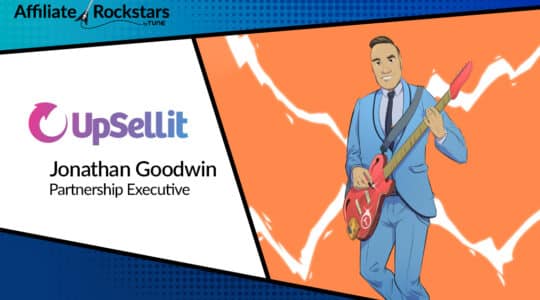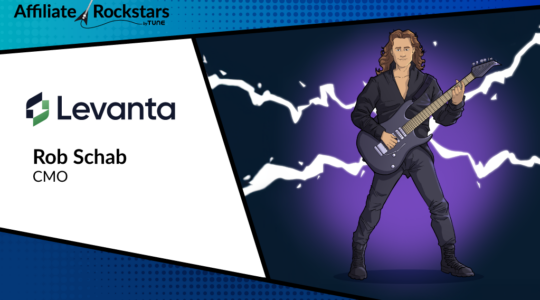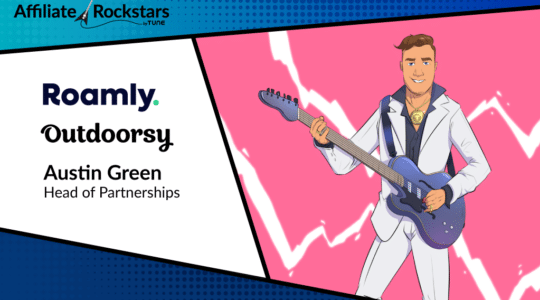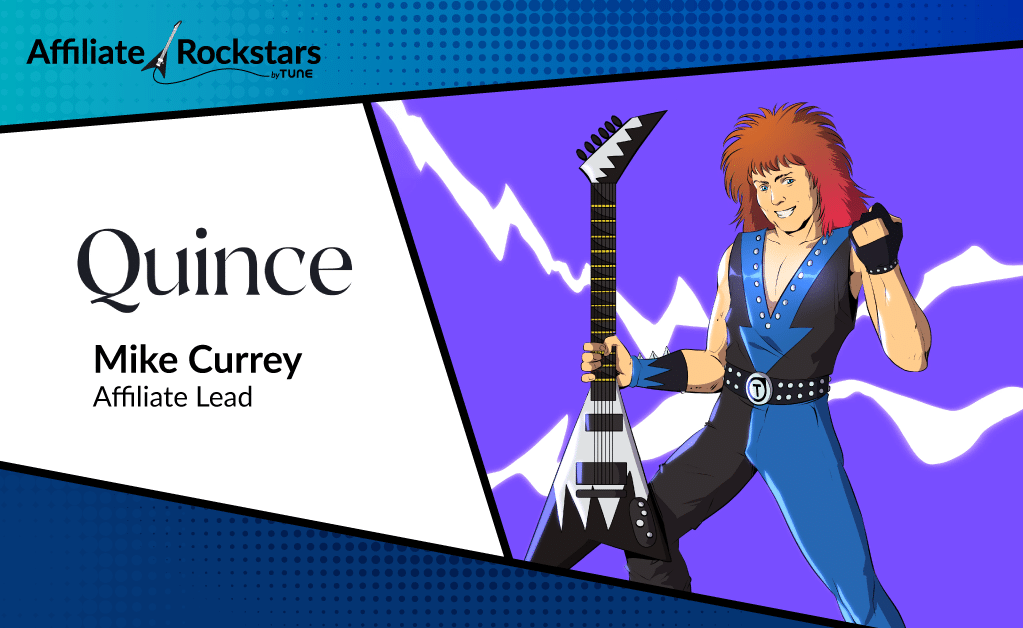
Introducing Mike Currey
Mike started his career in marketing in the music and entertainment industry before working in media sales and then on the agency side at Razorfish. He’s since been working with affiliates on the brand side at companies like T-Mobile and Blue Nile, along with his current role at Quince, where he leads their affiliate and display efforts. Mike was also recently a speaker at PI Live 2023 in Miami.
Rockstar Q&A with Mike
What are your day-to-day duties?
Oversee program strategy, finance, operational build-out, a team of three, and ideate product build-outs internal and external. Collaborate with other internal partners to build strategy and attribution. Manage a subset of publishers outside of content commerce.
How did you get into affiliate marketing?
I joined T-Mobile on contract to help launch their display retargeting and manage a dormant affiliate program. After three months, I came on full-time for an affiliate and passed on the display to another new hire. That gig lasted almost six years before moving into other consulting/brands.
What are your most important KPIs?
Focusing on retail — margin and then return rate. I can drive traffic and revenue all day long but at the end of the day, if the brand is not making money after media spend/commissions, then is the tactic working? Also, not all publishers are equal. Some have an audience that likes to return products but commissions have been paid out.
What is your biggest pet peeve about the affiliate industry?
Lack of upper leadership support. The affiliate strategy has been around since the early ’90s and helped launch Amazon; Amazon seems to have worked out okay. There is value in the effort but a lot of leadership only sees it as a lower-funnel discount channel. It does come down to affiliate managers and agencies, too. Many load up programs with last-click partners, so that is what leadership sees. We as an industry need to be more responsible and diversify programs that show the value of the channel. So much collaboration with other internal media and payment models can be done for the full funnel. We just have to incorporate it into our programs and have seen many moving into this with the adoption of PR into the publisher mix.
What’s your ideal partner mix?
The Quince brand is young, so getting the name out through product reviews is our current mix. I would say 80% of the partners are content and 20% are a mix of gated relationships through offers/rewards.
What have you done in the last 6-12 months to improve your affiliate marketing efforts?
The program I walked into was previously managed by an agency that loaded the program up with coupons, sub-networks, and toolbars. Leadership took notice and had the data scientists do a deep dive. The results showed most of it was not incremental and started to move away into a content-based program. I came on a couple of months later. Immediately I started to remove all of the toolbars lingering, cleaned up our promo code structure for the company, shifted away from multi-use codes, and cleaned up publishers that were hijacking links, codes, and content. That was the first three months, so now I’m focused on building service discounts and offline strategies.
“Affiliate” or “partner”?
I would lean towards “partner.” Affiliate has a bit of taboo these days and a Wild West meaning. “Partner” brings in the notion two people are working together to build a strategy together. Wild West versus one-to-one.
What is the biggest mistake you’ve made in affiliate marketing?
Probably not going to as many affiliate conferences over the years. So many relationships have been forged there and I know a lot of people over email, but this industry is so personable. In-person does make a difference.
How important is following the journey of a user after you (or your advertisers) first acquire them or after their first purchase?
The journey before and during checkout is important to me. I want to know the media mix and which flows offline drive the greatest conversion rate. Even onsite, understanding what funnel by the publisher by publisher type drives the best conversion rate. This really depends a lot on the affiliate platform used, though.
Do you have a specific strategy for influencers?
The Quince influencer team builds brand awareness through partnered campaigns and UGC for other teams to whitelist. The affiliate team focuses on the organic side through long-tail reviews. I wouldn’t say it is not much than other retail brands.
If you’re interested in becoming a future Affiliate Rockstar, submit an application here.
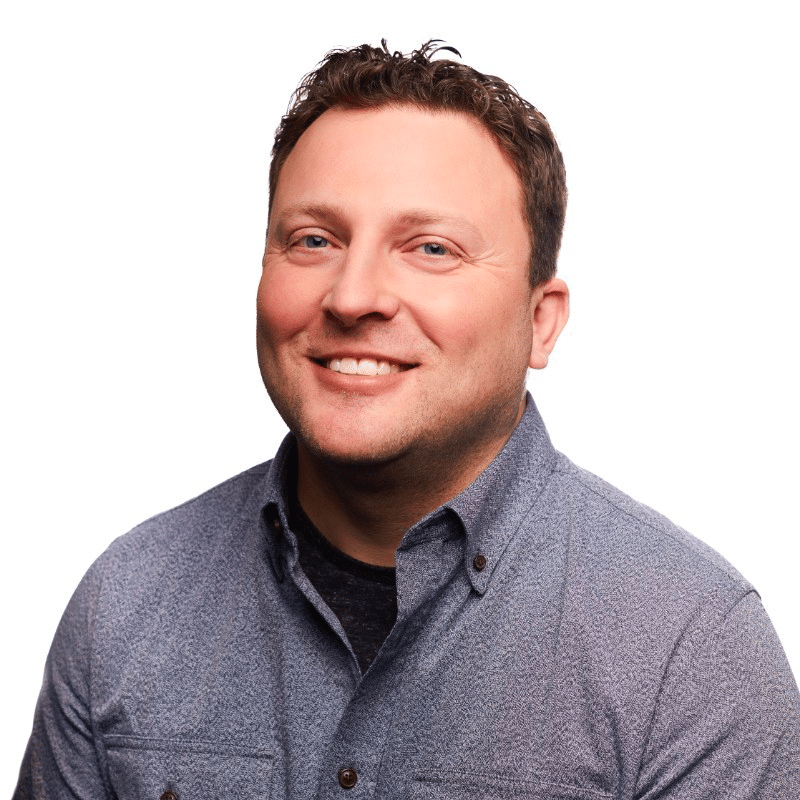
Author
During his time as VP, Business Development at TUNE, Nate spearheaded the Affiliate Rockstars series, which aims to highlight the hard-working individuals in the industry and share their expertise with a wider audience. Nate received his BA in Social Sciences from Washington State University.

